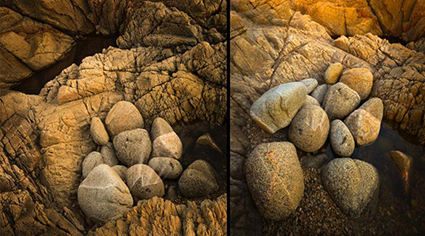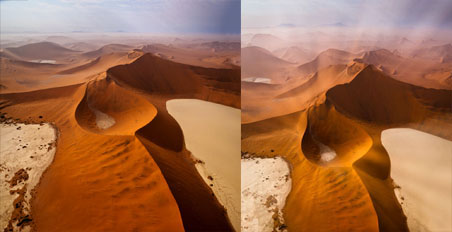My Free June Desktop Calendar Features Iceland

My free June Desktop Calendar features an image from Namibia’s Serra Cafema.
Download your free copy here.
Find out more about this image here.

My free June Desktop Calendar features an image from Namibia’s Serra Cafema.
Download your free copy here.
Find out more about this image here.

Members of my newsletter Collectors Alert just received a very special offer. Two prints for one very low price. It’s the best deal I’ve ever offered.
Collectors Alert will give you previews of new images, tell you the stories behind them, offer you special discounts, and alert you about upcoming exhibits and publications.
Sign up for my newsletter Collectors Alert here.
Inquire by emailing me at jpc@johnpaulcaponigro.com.
Illumination XXXI, 2014
It was one of my best sessions.
I had come prepared.
I knew the location well. My father first brought me to the Point Lobos region when I was very young. Later, during my college years, I spent more time exploring the coast. Long after that, I visited many more times, including several visits to prepare for leading workshops where you have to orient yourself more objectively. This was one of those times.
I knew the subject well photographically. Photographing in the region had a long history and I knew the images and their creators, often first-hand. Adams, Bullock, Caponigro, Sexton, Weston(s), White, Witherill, Uelsmann (and so many others) – they’d all made images there. I’d revisited them all to prepare for this session. I knew that if I made successful images, that it was inevitable that some comparison to other works would be made. I knew that their images had influenced my vision and that I needed to more fully digest that influence to be free enough to make my own images, in my own ways, and on my own terms. And, I’d failed many times before.
I knew how to work the situation well. I came before the light was best and stayed sometime after it had passed. I didn’t make just one image; I made many. I surveyed a variety of aspects of the subject; planes, peaks, valleys, boulders, grottos, cracks, pools, waterline, etc. I framed each composition deliberately, then asked how it could be improved, and made that image too.
I knew myself well. I’d taken stock of my history, my vision, my themes, my style, and my goals. My natural tendencies resurfaced; I approached the land as if it were a human body. Long-standing themes reemerged; birth, death, and rebirth. I was aware of what I was bringing to the table – personally.
I also knew that, despite all this preparation, this would become a purely intellectual affair if I didn’t respond associatively and emotionally. So I let this all well up, holding nothing back – and I was surprised by what I discovered.
Old memories resurfaced, specifically of my first wife, who I used to visit these places with and who died of cancer when our son was very young, leaving a great deal unresolved. Then more memories surfaced of the decision not to have children with my second wife, a cancer survivor, because of health concerns. And here I was turning stones into wombs. I was emotionally present, raw even – and moving forward. I kept this inner dialog alive as I continued to make images. I had to answer this call to greater depth. Doing this work and making these images had become extremely personal.
Perhaps the images from this session are not my very best pictures, but it was one of my very best performances. It became a milestone for me. It had exceptional intensity and depth. That’s a level I now try to get to more consistently – or exceed. And I know what it takes.
It’s wonderful to see someone bring their A game. It can even help you find your own. But, your A game may be very different than someone else’s A game. To know what your A game is, you first have to get there. Once you know what’s possible, what it feels like, and what it takes to get there – you can bring it.
Questions
What performance would you identify as your best performance to date?
How would you describe your best performance to date?
What criteria do you use to evaluate your performance?
What areas are you concentrating on to improve your performance?
What steps are you taking to improve your performance?
When is it useful to separate your evaluation of performance from results?
View more related images here.
Read more The Stories Behind The Images here.
Illumination XXVI, Jokulsarlon, Iceland, 2012
Motion picture director Wood Allen famously remarked, “80% of success is just showing up.” One wintry night at Iceland’s glacial lagoon (Jokulsarlon) it seemed like all I had to do was show up. The heavens danced with aurora borealis’ green fire for hours. Cascades of light appeared and disappeared dynamically illuminating the heavens with a light brighter than the stars and moon rising above the dormant volcano, icecap, glaciers, frozen lagoon, icebergs, black sand beaches, and crashing surf. The waves of radiation formed and reformed into shapes suggesting animals, birds, fish, flowers, and more. When there’s fire in the heavens every moment is a magic moment.
You’ll score if you just stay in the game and keep rolling the dice. The more you roll the dice the more likely it is that you’ll score. The longer you stay in the game, the more you get to try your luck. You’re lucky to be playing, and who knows you might just get luckier. Sometimes, all you have to do is be at the right place at the right time. Sometimes, it’s that simple.
Questions
How frequently do you show up?
Are you selective about the places you show up?
Are you selective about the times you show up?
Find out more about this image here.
View more related images here.
Read more The Stories Behind The Images here.
Illumination II, Sossusvlei, Namibia 2012.
In 2010, during my third trip to one of the oldest desert’s in the world, Namibia’s Sossusvlei dune field, I enjoyed one of the most sublime hours of my life, from a helicopter. Moments of grace like this fill you with reverence for the miracle world we live in and a deep abiding gratitude to be a part of it all. I was prepared for it, but nonetheless surprised.
Before arriving, to plan where to go and how to maximize my time this magnificent dune field, I had done a considerable amount of virtual aerial research with Google Earth, zooming and panning images made from the combination of thousands of satellite images at various magnifications, to familiarize myself with where it started and stopped, how it changed in character, and the relative location of landmarks such as the dunes Big Mama and Big Daddy and the famous clay playa Deadvlei.
None of that could have prepared me for the changing angle of light, we were on the second flight of the day, an hour after sunrise, and the atmospheric conditions, all week long, the air was filled with dust from far off sandstorms that scattered the rays of the sun, permeating the sky with a white gold light. On site, I had to assess the impact of current conditions.
Even at an altitude about 3,000 feet, twice the height of the largest dunes, I found I couldn’t fit the vast dune field into my viewfinder. So I improvised and started making multi-shot exposures for panoramic stitches. It seemed like a bold move, if the two or three shots did not merge successfully then both would be lost, until one of my companions, Paul Tornaquindici, made an even bolder move and requested we do a 360 stationary rotation so that he could make a panoramic image of the entire dune field. To my delight, this method worked.
The images lay simmering in my unconscious for more than a year before I found my final solution, to render an effect of light as if it were originating from within the land to complement the light that showered down outside it. Often, a period of gestation is necessary to distill the essence of rich experiences to their essentials and connect them to others.
New image processing features informed the final realization of this image. The body metaphors, latent in these images, were intensified with creative perspective adjustments, using lens profile corrections, designed to remove mechanical optical distortions, now used expressively. Quite different than a change of angle of view, which reveals and obscures information, these distortions offered complementary but distinctly different visual effects, changing relative proportions and spatial relationships within the image. This solidified my previous experiments to compare and contrast the two and so learn to fully utilize them in tandem with one another intuitively.
Unexpectedly, the dynamic explorations made during the creation of this image suggested an entirely new alternate solution – one not fit for print. Animations of progressive distortions made the images appear to pulse and breathe, an effect that is perfectly in sync with my view of land as a living thing with a spirit of its own.
Making this image required pre-planning and then allowing that plan to evolve while responding to new input at each step in the creative process.
How can planning help strengthen your creative efforts?
At what stages and in how many ways can you encourage the evolution of those plans?
When is it better to abandon an old plan for a new one?
What are the positive and negative effects of having no plan at all?
View more related images here.
Read more The Stories Behind The Images here.
